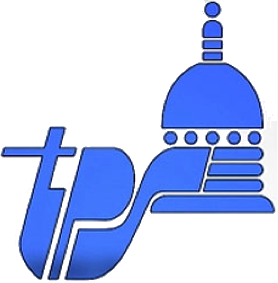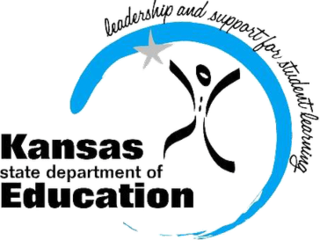
Kansas State University is a public land-grant research university with its main campus in Manhattan, Kansas. It was opened as the state's land-grant college in 1863 and was the first public institution of higher learning in the state of Kansas. It had a record high enrollment of 24,766 students for the Fall 2014 semester.
Brown v. Board of Education of Topeka, 347 U.S. 483 (1954), was a landmark decision of the U.S. Supreme Court ruling that U.S. state laws establishing racial segregation in public schools are unconstitutional, even if the segregated schools are otherwise equal in quality. The decision partially overruled the Court's 1896 decision Plessy v. Ferguson, which had held that racial segregation laws did not violate the U.S. Constitution as long as the facilities for each race were equal in quality, a doctrine that had come to be known as "separate but equal". The Court's unanimous decision in Brown, and its related cases, paved the way for integration and was a major victory of the civil rights movement, and a model for many future impact litigation cases.

The University of Kansas (KU) is a public research university with its main campus in Lawrence, Kansas, United States. Two branch campuses are in the Kansas City metropolitan area on the Kansas side: the university's medical school and hospital in Kansas City, Kansas, the Edwards Campus in Overland Park. There are also educational and research sites in Garden City, Hays, Leavenworth, Parsons, and Topeka, an agricultural education center in rural north Douglas County, and branches of the medical school in Salina and Wichita. The university is a member of the Association of American Universities and is classified among "R1: Doctoral Universities – Very high research activity".

Emporia State University is a public university in Emporia, Kansas, United States. Established in March 1863 as the Kansas State Normal School, Emporia State is the third-oldest public university in the state of Kansas. Emporia State is one of six public universities governed by the Kansas Board of Regents.

Washburn University (WU), formally Washburn University of Topeka, is a public university in Topeka, Kansas, United States. It offers undergraduate and graduate programs, as well as professional programs in law and business. Washburn has 550 faculty members, who teach more than 6,100 undergraduate students and nearly 800 graduate students. The university's assets include a $158 million endowment. As of 2008, Washburn also took over overseeing the technical school in the area, Washburn Tech.

Sul Ross State University (SRSU) is a public university in Alpine, Texas. The main campus is the primary institution of higher education serving the nineteen-county Big Bend region of far West Texas. Branch campuses, branded as Rio Grande College, are located in Del Rio, Uvalde, Eagle Pass, and Castroville.

Pittsburg State University is a public university in Pittsburg, Kansas, United States. It enrolls approximately 7,400 students and is a member of the Kansas Board of Regents.

The University of Tennessee System is a system of public universities in the U.S. state of Tennessee. It is one of two public university systems, the other being the Tennessee Board of Regents (TBR). It consists of four primary campuses in Knoxville, Chattanooga, Pulaski and Martin; a health sciences campus in Memphis; a research institute in Tullahoma; and various extensions throughout the state.

Fort Hays State University (FHSU) is a public university in Hays, Kansas. It is the largest university in western Kansas, and the fourth-largest of the six state universities governed by the Kansas Board of Regents, with a total enrollment of approximately 15,100 students.

Topeka USD 501, also known as Topeka Public Schools, is a public unified school district headquartered in Topeka, Kansas, United States. It is one of four school districts that serve the city of Topeka. Serving 13,430 students in the 2019-2020 school year, the district comprises 5 high schools, 6 middle schools, 15 elementary schools, and 7 other schools focused on serving other Pre-K-12 students. It has the highest enrollment of all school districts in Shawnee County. Topeka Public Schools is widely known for its role in the landmark Brown v. Board of Education school desegregation case.

Kansas State Department Board of Education (KSDE) is Kansas's Board of Education, headquartered in Topeka. The board of education that controls the department is a constitutional body established in Article 6 of the Kansas Constitution. The ten members of the Board of Education are each elected to four-year terms. The Board helps determine educational policy for the state's primary and secondary schools.
Washington State University Spokane, branded as WSU Health Sciences Spokane, is a campus of Washington State University located in Spokane, Washington. It was established in 1989 and, as of 2010, is designated as the university's health science campus. The urban campus is housed on the 48-acre (19 ha) multi-institutional WSU Health Sciences Spokane campus, formerly known as the Riverpoint Campus, in Spokane's University District just east of Downtown Spokane.

Seaman High School is a public secondary school in Topeka, Kansas, United States. It serves students from grades 9 to 12. It is operated by Seaman USD 345 school district, which covers 84 square miles of northern Topeka and rural Shawnee County, Kansas. The high school is one of the few in the world where the students operate a chartered bank.
The University of Kansas Edwards Campus, also known as the KU Edwards Campus, is a satellite campus of the University of Kansas. The campus is located in Overland Park in the Kansas City metropolitan area; its four buildings are located on a 34.8 acres (14.1 ha) site at 127th Street and Quivira Road.
The Kansas Academy of Mathematics and Science (KAMS) is a two-year, residential, early-entrance-to-college program for U.S. high school juniors and seniors who are academically talented in the areas of mathematics and science. Located on the Fort Hays State University campus in Hays, Kansas, students concurrently complete their last two years of high school, while earning over 60 college credits.

The University of Kansas School of Medicine is a public medical school located on the University of Kansas Medical Center campuses in Kansas City, Kansas, and also Salina, Kansas, and Wichita, Kansas. The Kansas City campus is co-located with the independent University of Kansas Health System, and they are commonly known collectively as KU Med.

The history of the University of Kansas can be traced back to 1855, when efforts were begun to establish a "University of the Territory of Kansas." Nine years later in 1864, together with the help of Amos Adams Lawrence, former Kansas Governor Charles L. Robinson, and several other prominent figures, the Kansas Legislature chartered the University of Kansas in Lawrence, Kansas. The university was initially funded by a $15,000 endowment on a 40-acre (160,000 m2) allotment of land from Charles Robinson and his wife Sara. The university commenced preparatory-level classes in 1866 and college-level classes in 1869.

Mirta Maria Martin is an American former educator who was the president of Fairmont State University from 2018 to 2022 and the president of Fort Hays State University from 2014 to 2016. Prior to Fort Hays State, Martin served as the Dean of Virginia State University's Reginald F. Lewis School of Business, a position she held from August 1, 2009 until June 30, 2014.

John Andrew Tompkins is an American educator in Kansas. Prior to his previous post at Wichita State University, he served as interim president at Fort Hays State, as well as the president of the Kansas Board of Regents from 2010 to 2015. Tompkins was a professor and dean at Pittsburg State University two different times, and served as a superintendent of three different Kansas school districts. Tompkins is also the former Commissioner of the Kansas State Department of Education, serving from June 1, 1996 to June 30, 2005.















